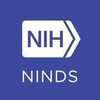Enhancement of Use-Dependent Plasticity by Somatosensory Stimulation in Chronic Stroke
Cerebrovascular Accident

About this trial
This is an interventional trial for Cerebrovascular Accident focused on measuring Plasticity, Motor Cortex, Stroke, Somatosensory, Hemiparesis
Eligibility Criteria
INCLUSION CRITERIA: Hemiparetic patients (right or left who had thromboembolic non-hemorrhagic infarction (documented by CT or MRI) more than 6 months before. Patients should have recovered motor function to the point of being able to perform thumb movements. Patients will be recruited from referrals from the community, particularly Baltimore and Washington VA hospitals, and Suburban Hospital as well as stroke clubs. An anatomical MRI scan will be acquired at the NIH if a recent one (within 6 months) is not available. EXCLUSION CRITERIA: Large hemorrhagic or brain stem stroke. Multiple cerebral lesions with residual deficits. History of head injury with loss of consciousness. History of severe alcohol or drug abuse. History of psychiatric illness. Unstable cardiac dysrhythmia or unresponsive arterial hypertension (greater than 160/100 mmHg). H/o hyperthyroidism. Receiving alpha-adrenergic antagonists or agonists, major/minor tranquilizers, clonidine,prazosin, phenytoin, benzodiazepines, scopolamine, haloperidol, other neuroleptics, barbiturates. Degree of aphasia or cognitive deficit that makes patient unable to give informed consent. Pregnancy, glaucoma, h/o hypersensitivity or idiosyncrasy to sympatomimetic drugs.
Sites / Locations
- National Institute of Neurological Disorders and Stroke (NINDS)
Outcomes
Primary Outcome Measures
Secondary Outcome Measures
Full Information
1. Study Identification
2. Study Status
3. Sponsor/Collaborators
4. Oversight
5. Study Description
6. Conditions and Keywords
7. Study Design
8. Arms, Groups, and Interventions
10. Eligibility
12. IPD Sharing Statement
Learn more about this trial
